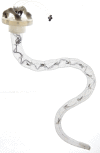Soft Robots Manufacturing: A Review
- PMID: 33500963
- PMCID: PMC7805834
- DOI: 10.3389/frobt.2018.00084
Soft Robots Manufacturing: A Review
Abstract
The growing interest in soft robots comes from the new possibilities offered by these systems to cope with problems that cannot be addressed by robots built from rigid bodies. Many innovative solutions have been developed in recent years to design soft components and systems. They all demonstrate how soft robotics development is closely dependent on advanced manufacturing processes. This review aims at giving an insight on the current state of the art in soft robotics manufacturing. It first puts in light the elementary components that can be used to develop soft actuators, whether they use fluids, shape memory alloys, electro-active polymers or stimuli-responsive materials. Other types of elementary components, such as soft smart structures or soft-rigid hybrid systems, are then presented. The second part of this review deals with the manufacturing methods used to build complete soft structures. It includes molding, with possibly reinforcements and inclusions, additive manufacturing, thin-film manufacturing, shape deposition manufacturing, and bonding. The paper conclusions sums up the pros and cons of the presented techniques, and open to developing topics such as design methods for soft robotics and sensing technologies.
Keywords: design; manufacturing process; prototyping; soft components; soft robotics.
Copyright © 2018 Schmitt, Piccin, Barbé and Bayle.
Figures










References
-
- Albu-Schaffer A., Eiberger O., Grebenstein M., Haddadin S., Ott C., Wimbock T., et al. (2008). Soft robotics: from torque feedback controlled lightweight robots to intrinsically compliant systems. IEEE Robot. Automat. Mag. 15, 20–30. 10.1109/MRA.2008.927979 - DOI
-
- Anver H. M., Mutlu R., Alici G. (2017). 3D printing of a thin-wall soft and monolithic gripper using fused filament fabrication, in 2017 IEEE International Conference on Advanced Intelligent Mechatronics (AIM) (Munich: ), 442–447. 10.1109/AIM.2017.8014057 - DOI
-
- Araromi O. A., Walsh C. J., Wood R. J. (2016). Fabrication of stretchable composites with anisotropic electrical conductivity for compliant pressure transducers, in 2016 IEEE SENSORS (Orlando, FL: ), 1–3. 10.1109/ICSENS.2016.7808424 - DOI
Publication types
LinkOut - more resources
Full Text Sources
Other Literature Sources
Miscellaneous
